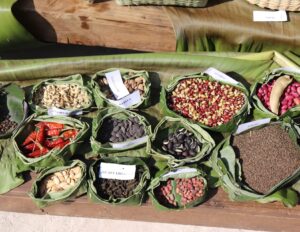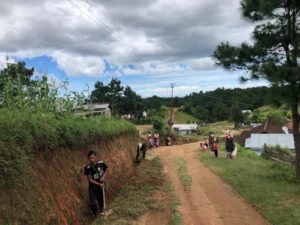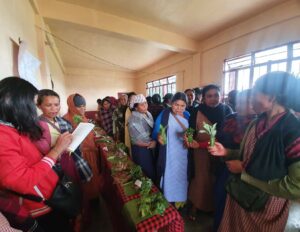Umsawwar, a tranquil village nestled in the scenic East Khasi Hills of Meghalaya, exudes a timeless charm and a strong sense of community. Recently, an engaging plantation program was organised in the village, showcasing their dedication to nurturing nature. In this serene setting, people of all ages united to shape a brighter future for themselves and the environment. Amidst their diligent efforts, laughter fills the air, reflecting their shared joy and commitment. Umsawwar stands as a shining example, inspiring neighboring communities to embrace a harmonious relationship with the natural world.
The plantation was part of a NESFAS project “Implementation of the Indigenous Peoples’ Biocentric Restoration in Meghalaya” which is supported by the Food and Agriculture Organization of the United Nations (FAO). The main objective is to restore the degraded land in these villages and territories by restoring the species and biodiversity in these areas with the help of indigenous people’s knowledge and management. Though having greenery around, some of the parts of the village are barren and majorly grasslands with less number of trees. This project is an effort to transform these barren lands and restore the local species in the village.
Led by the team from NESFAS, community facilitators and knowledge holders, the biodiversity plantation program was carefully planned to ensure a diverse mix of indigenous species- Diengdoh, Diengsning, Dieng sohphie and many more, enabling the restoration of the local ecosystem. Each plant was carefully selected to thrive in the village’s unique microclimate. The sites for the plantation were chosen properly. Groups were formed and they worked at the different sites spread across the villages. The men and women, displaying remarkable strength and determination, worked side by side, passing saplings from hand to hand, finding their designated spots with unwavering precision. Each tree was planted with care, as if they were nurturing a seedling of hope, symbolizing their commitment to preserving the beauty of their village for generations to come. Even the elderly people in the village were not behind in showcasing their spirit. The children, with hearts brimming with enthusiasm, armed with spades, saplings and seed balls they made by themselves, dug into the fertile soil, planting the seeds of a greener future. Their laughter echoed through the meadow, as they joyfully embraced their role as guardians of the environment. It was heartwarming to witness the younger generation wholeheartedly embracing their responsibilities, their smiles illuminating the faces of the elders. With each tree sapling that touched the earth, hope sprouted alongside. The villagers worked tirelessly, digging holes, tenderly placing the young plants, and nourishing them with care. Every tree represented a promise—a promise to combat deforestation, create wildlife habitats, and safeguard the delicate ecological balance. It was a labour of love, an act that bound the villagers together for a common purpose, the purpose of preserving mother earth.
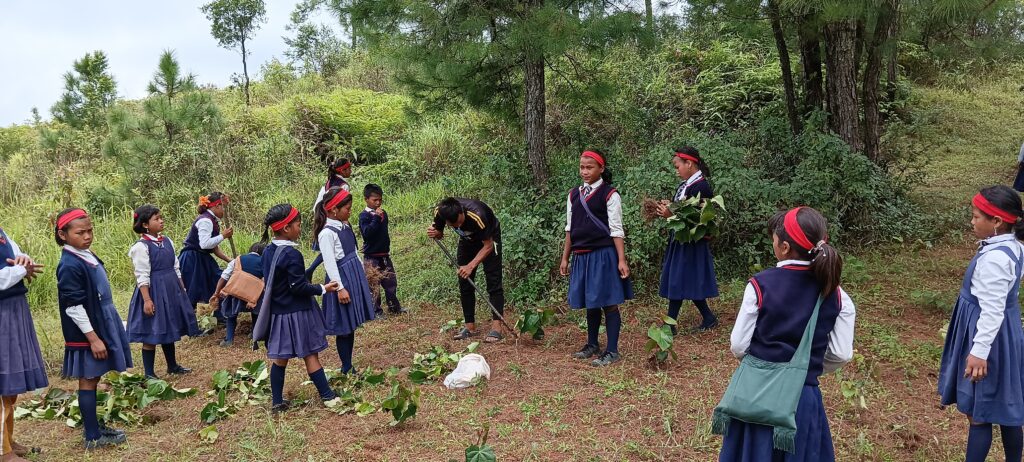
After the plantation program, a remarkable transformation took place. The once barren land now thrived with vibrant greenery, a testament to their collective efforts. By the day’s end, the meadow had transformed into a mesmerizing tapestry of green. Row upon row of young saplings stood tall, reaching towards the sky, their leaves shimmering in the gentle breeze.
The atmosphere was filled with joy and excitement as everyone, regardless of age or gender, shared happiness. The impact of their hard work was evident, and it brought a sense of pride to the entire community. A delightful lunch awaited them, fostering an atmosphere of togetherness and merriment. Laughter echoed through the air as they savoured the meal, strengthening the bonds between them.
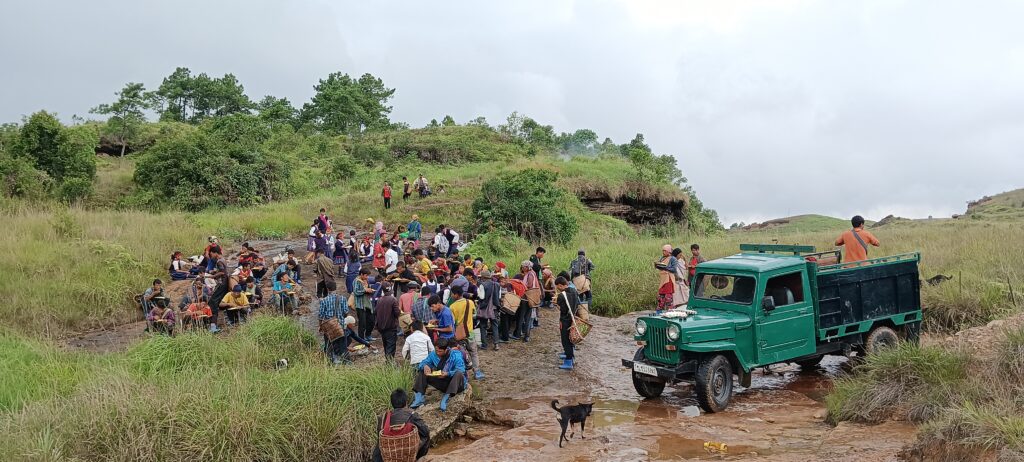
As Indigenous People living in harmony with nature for generations, they have always relied on nature for their livelihood, including gathering wild foods, practising agriculture, and using firewood. They understand that to sustain the flow of nature’s gifts, they must also give back. They value the interconnectedness between humans and nature, realizing that by nurturing and supporting nature, it will continue to provide for future generations. This belief is embraced by the entire community, as they recognize that working together and giving back to nature is the key to sustaining their way of life. By caring for their environment and respecting the natural world, they strive to create a better future for themselves and the generations to come.
The plantation program in Umsawwar marked the beginning of a transformation, not just for the land but also for the hearts and minds of its people. It was a day Umsawwar demonstrated the power of a united community, where age, gender, and status had no barriers. The success of the plantation program was not only measured by the number of saplings planted but also by the bonds forged within the community.
Umsawwar had reaffirmed its identity as a united force, capable of immense change when working together toward a common goal.
Umsawwar’s story continues to inspire and ignite hope, reminding us that when we come together and nurture our environment, we can create a better future for ourselves and the generations to come. The legacy of their plantation program lives on, a symbol of the enduring power of unity and the profound impact that a small village can have on the world.
–story by Harshal Bhoyar and Vrushali Ghadge
(Interns at NESFAS, currently pursuing MA Development at Azim Premji University)


